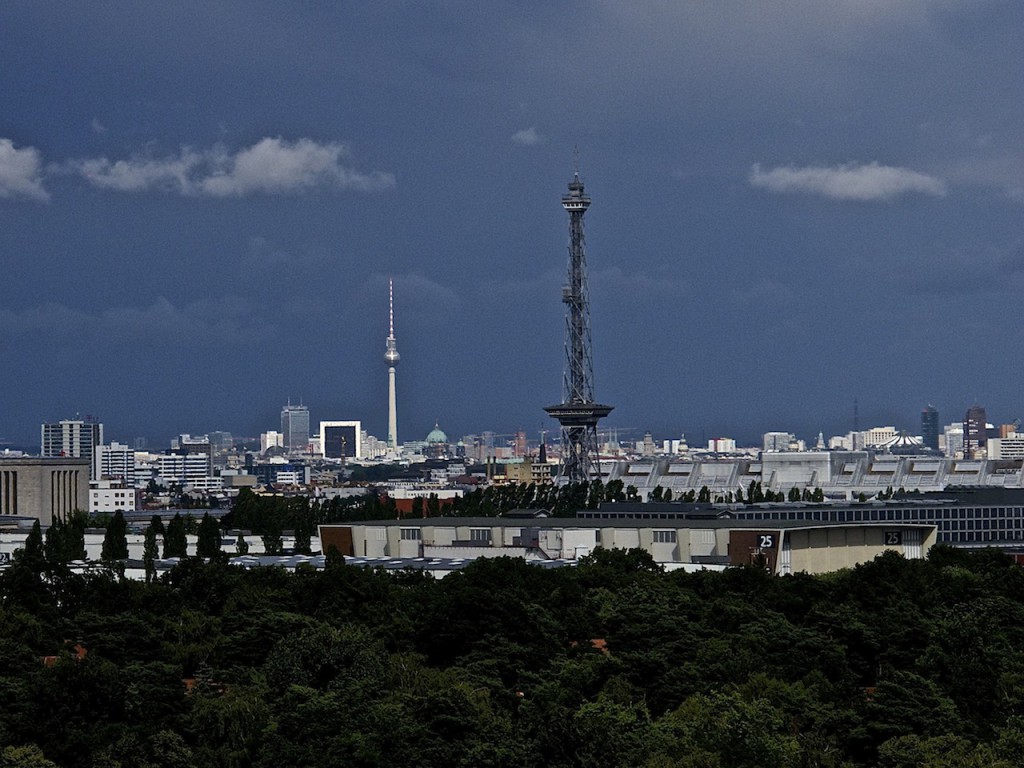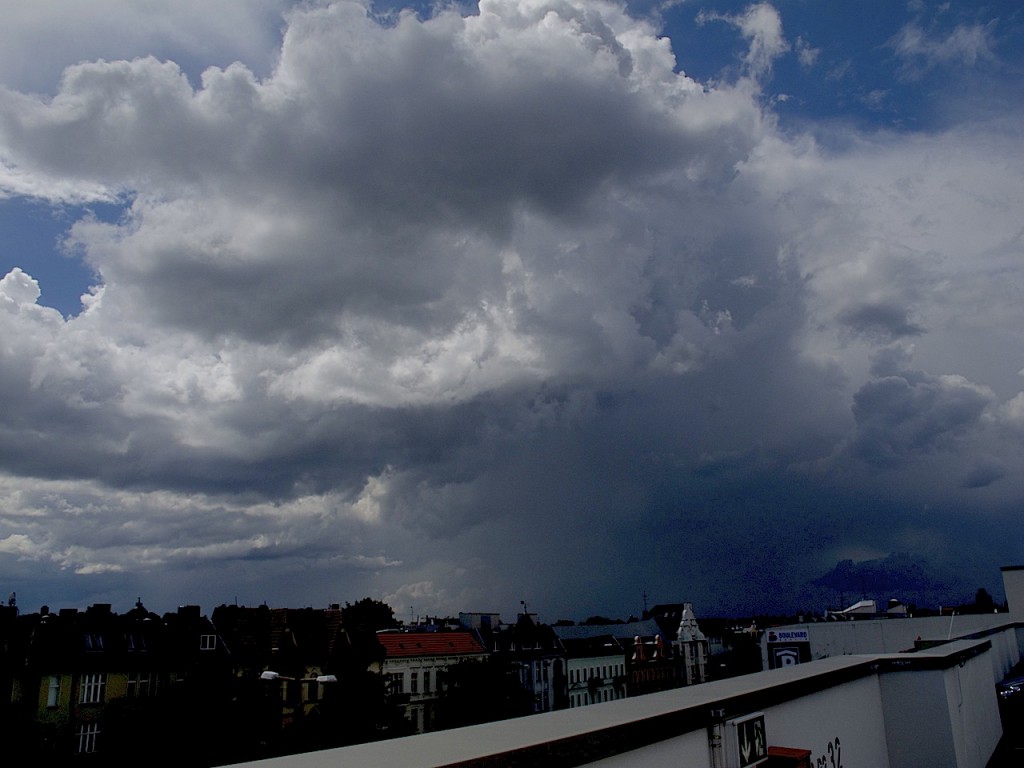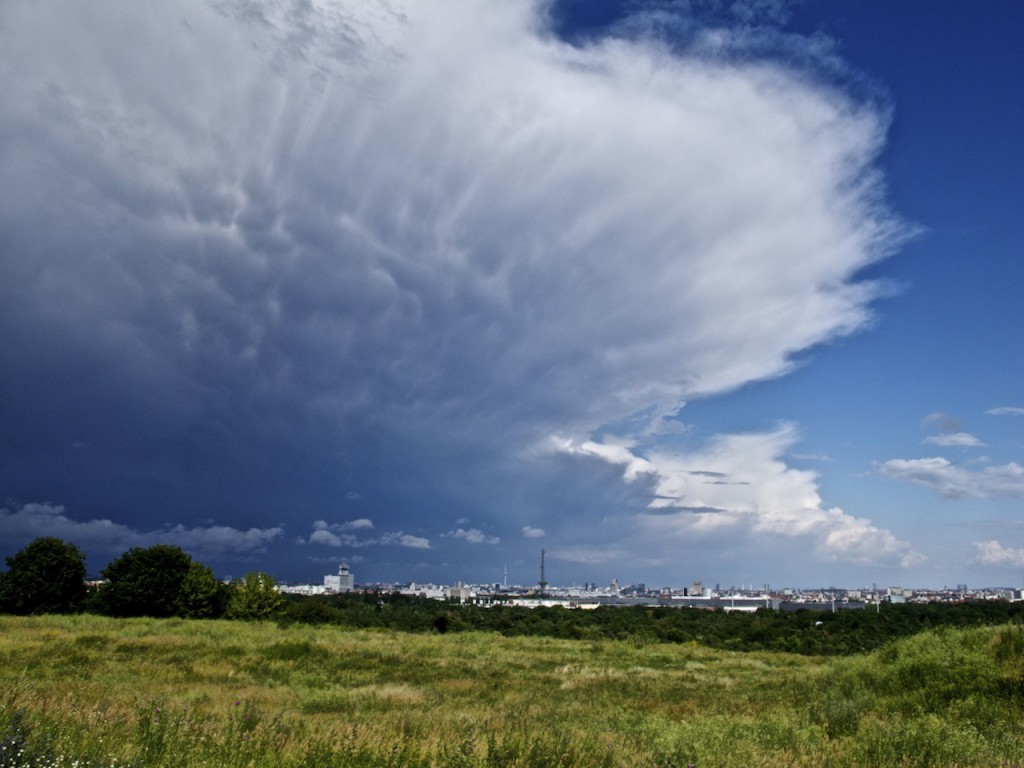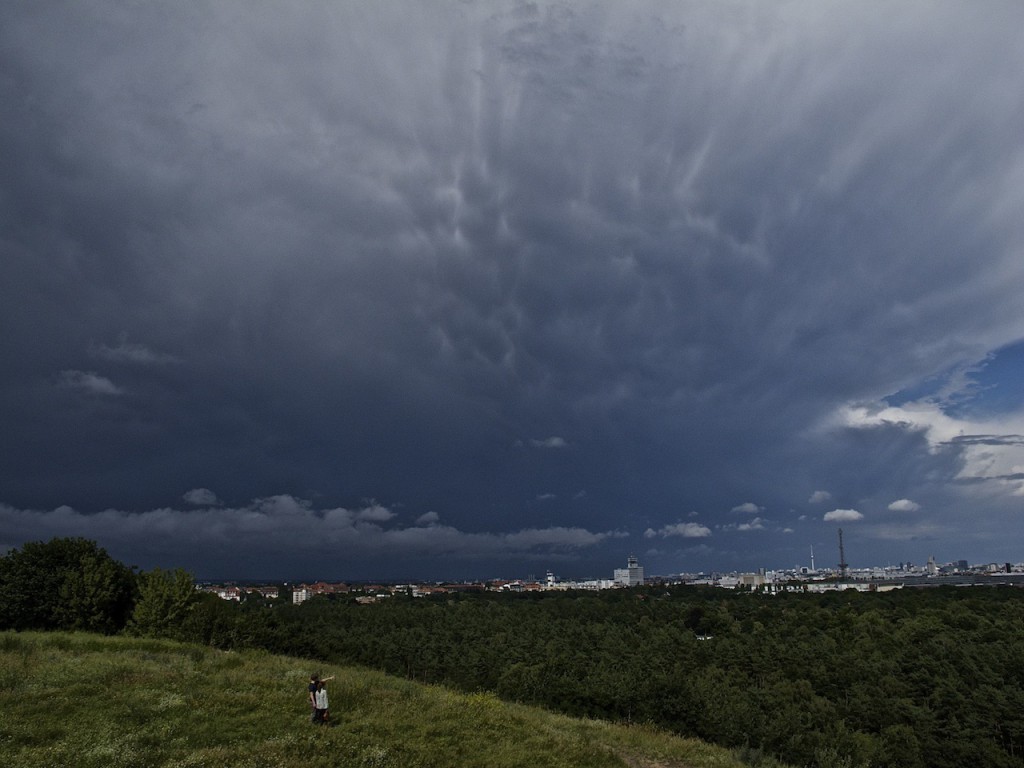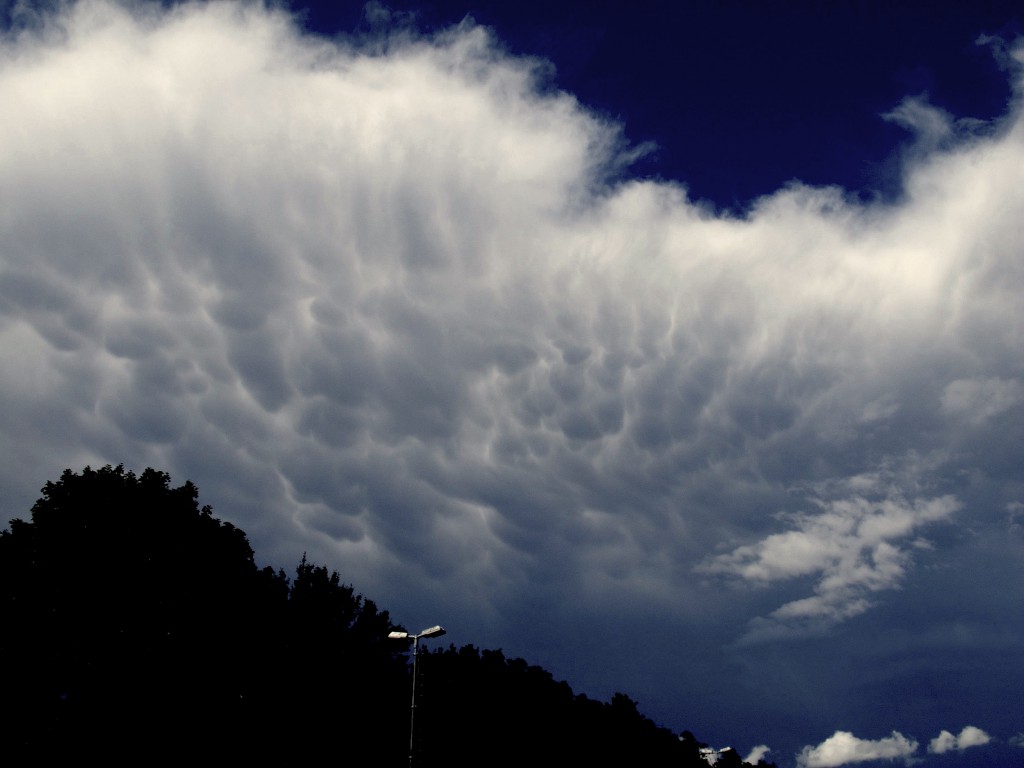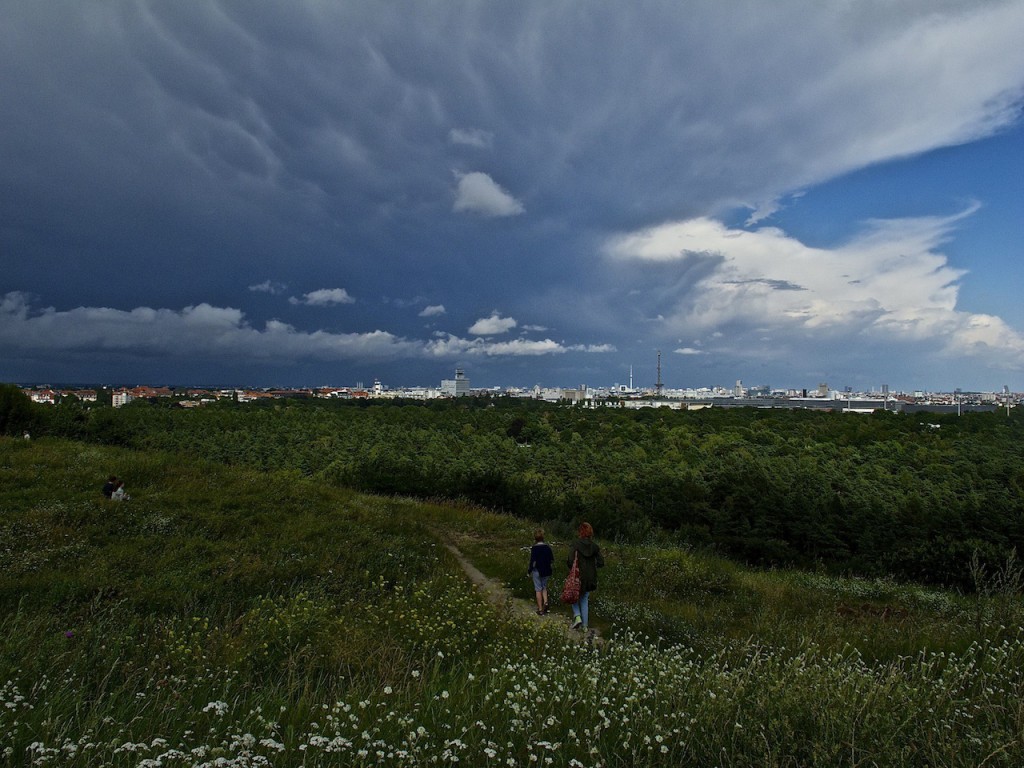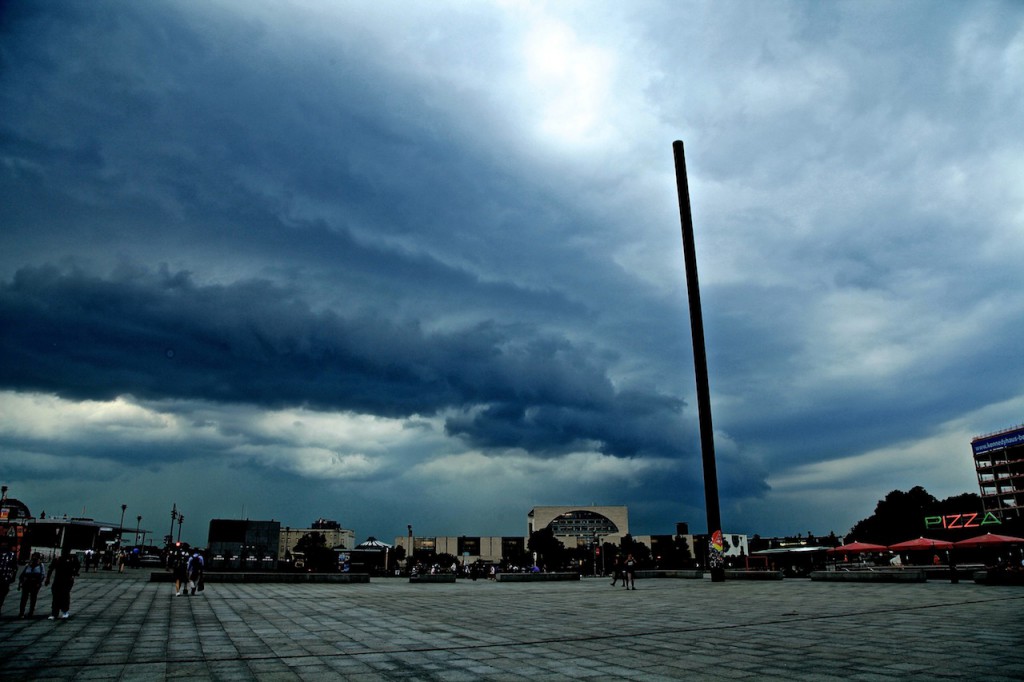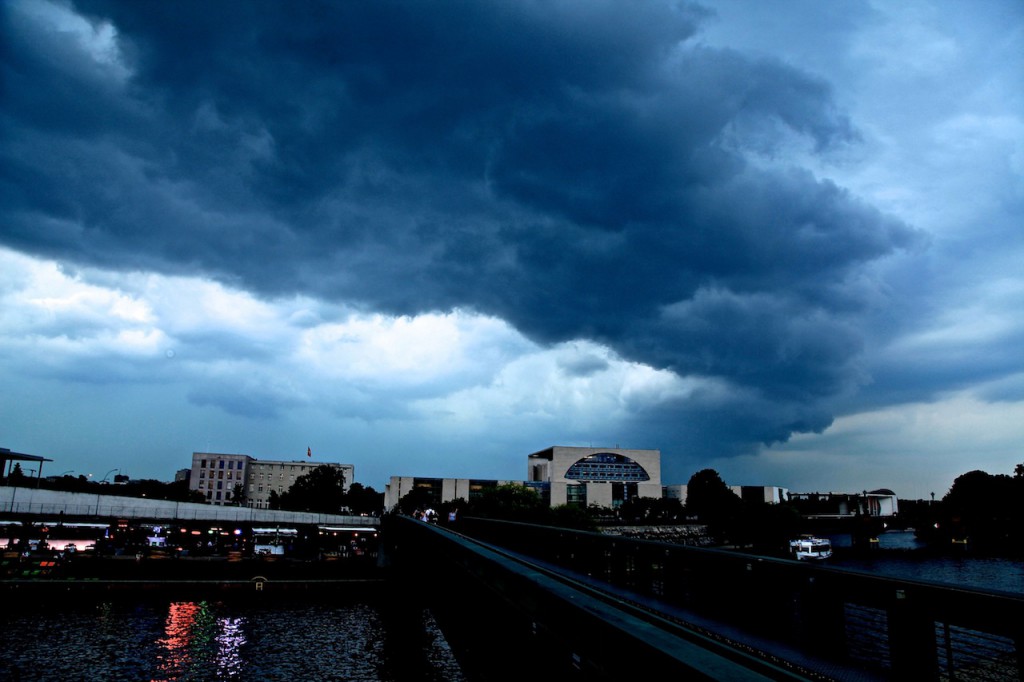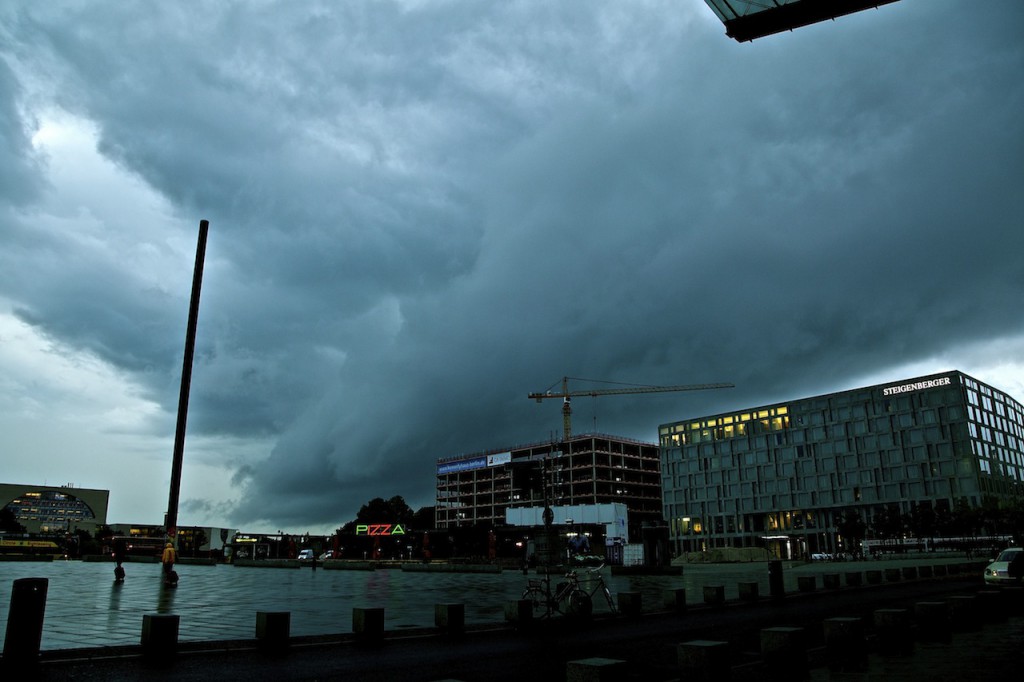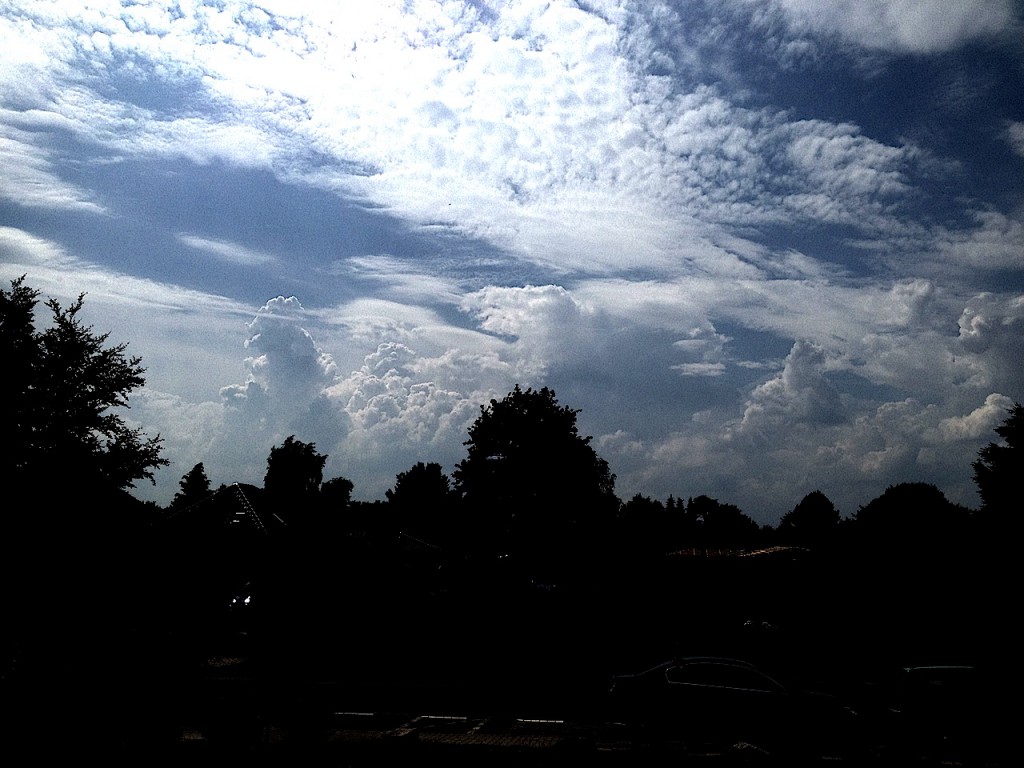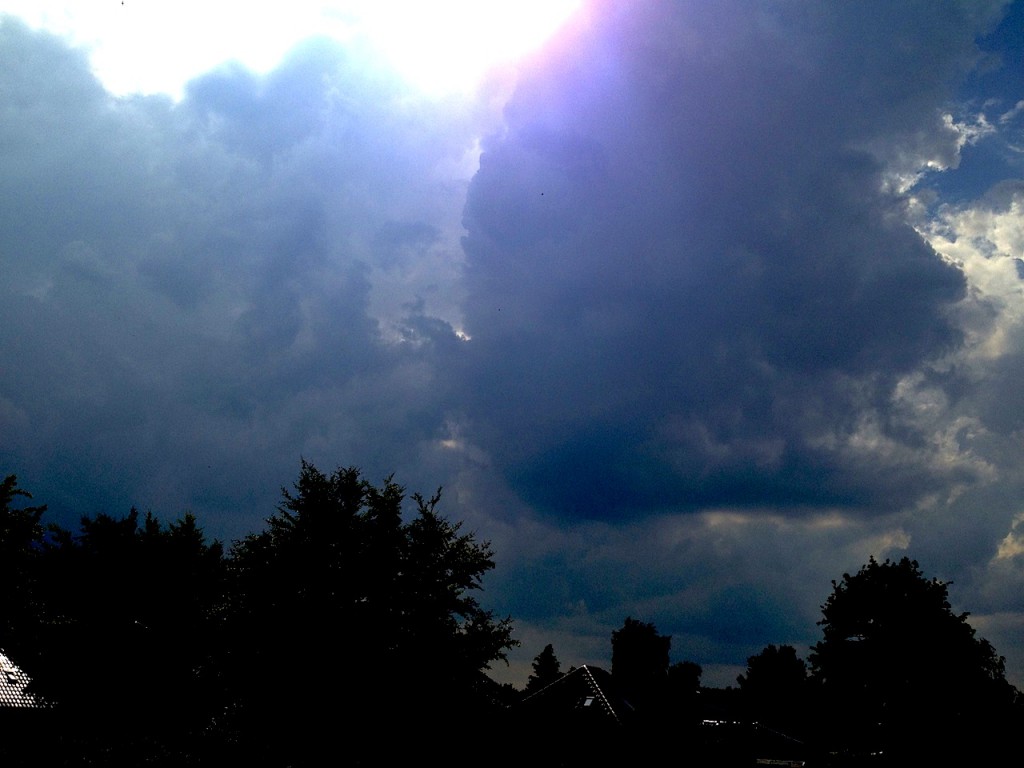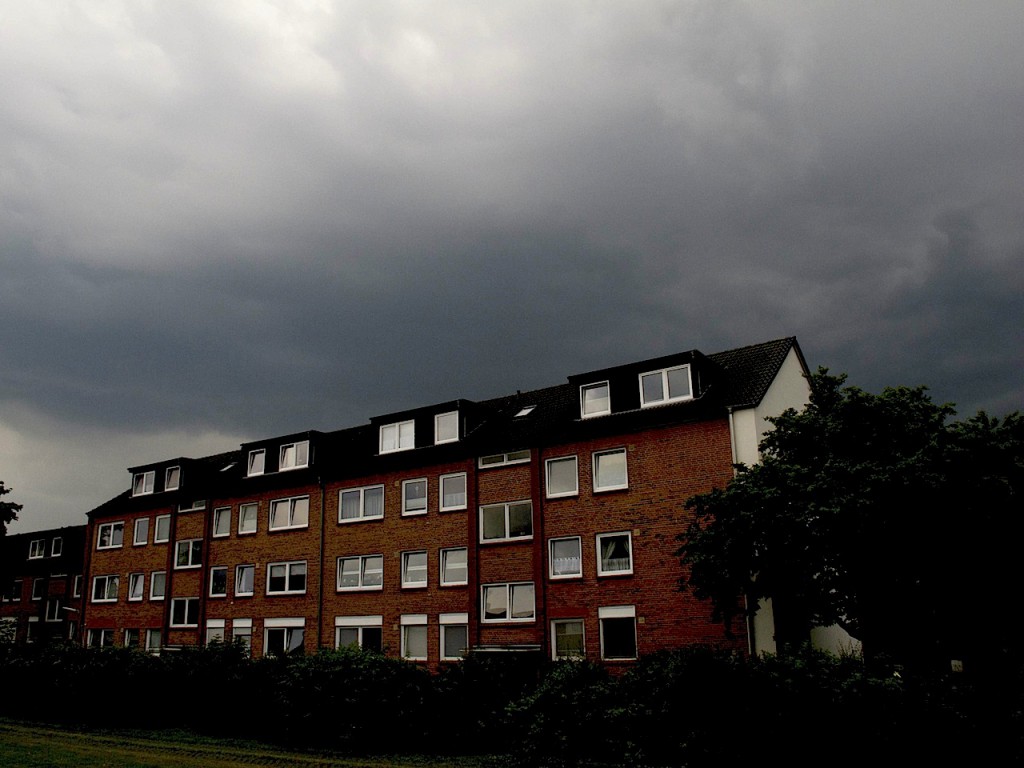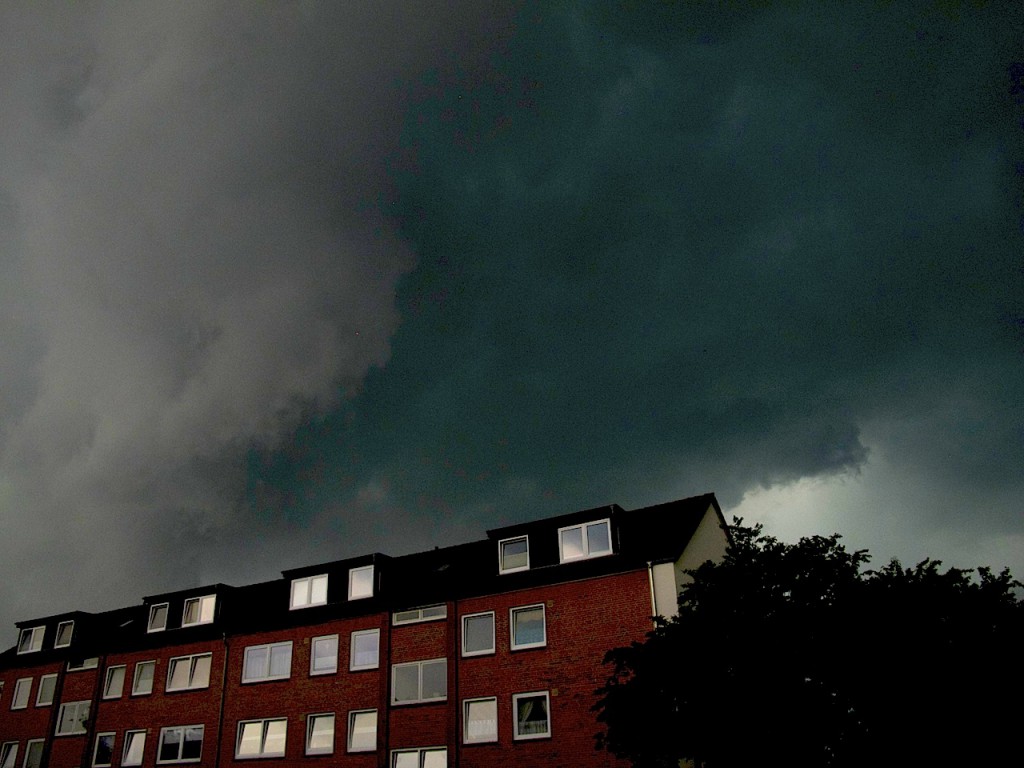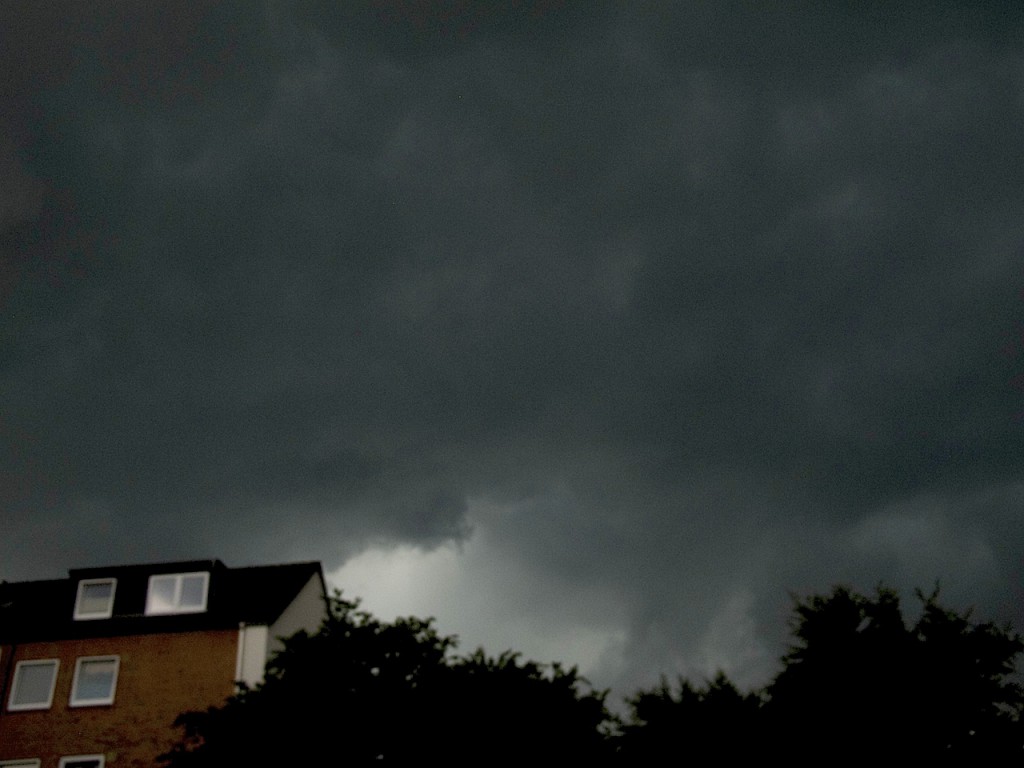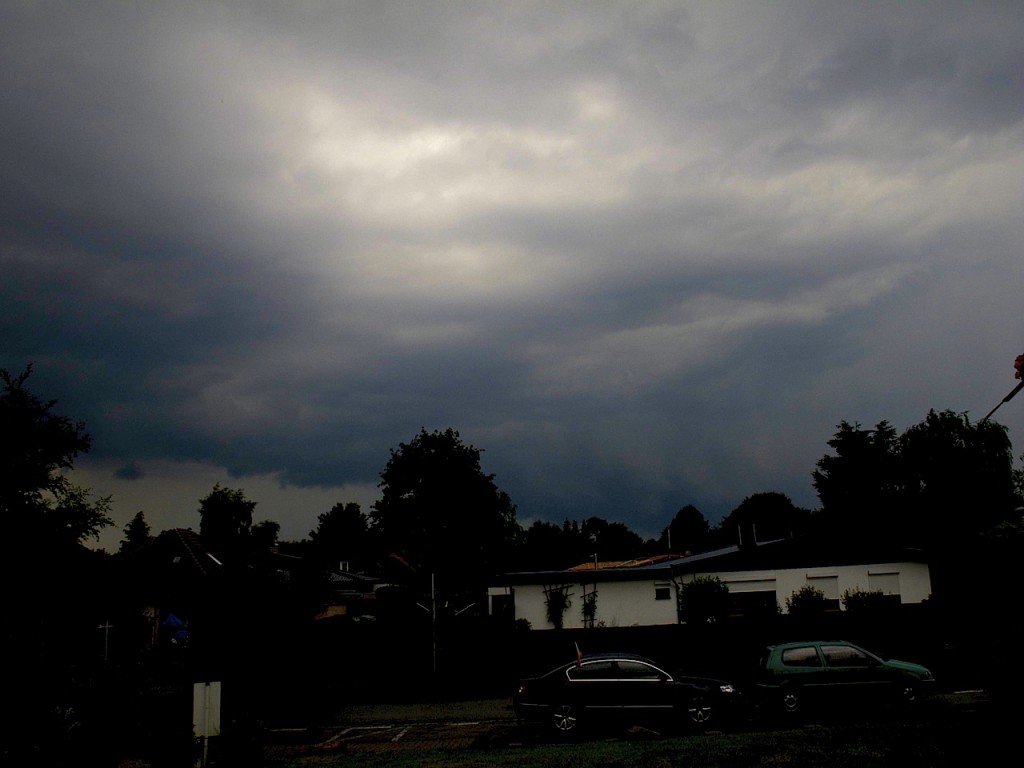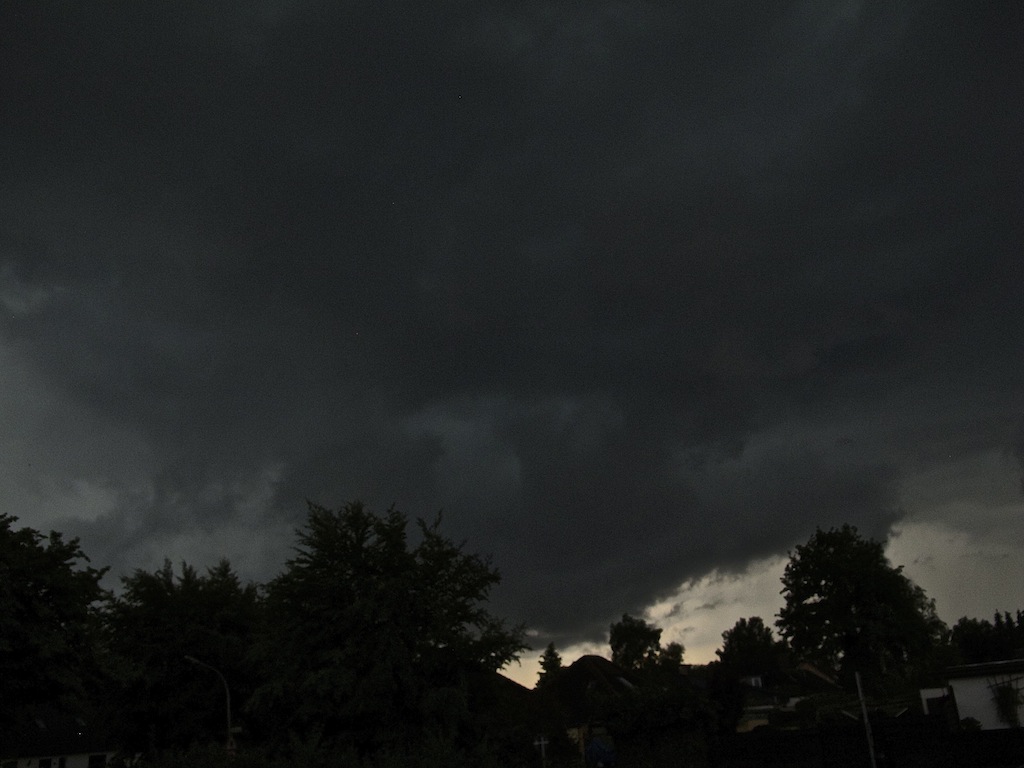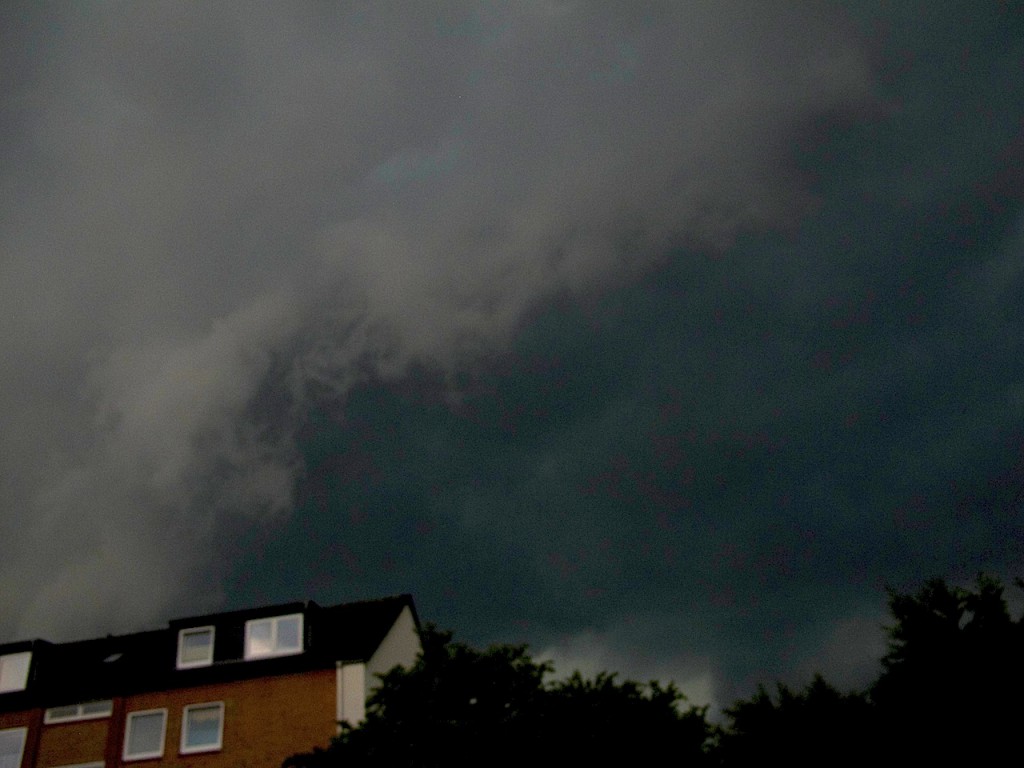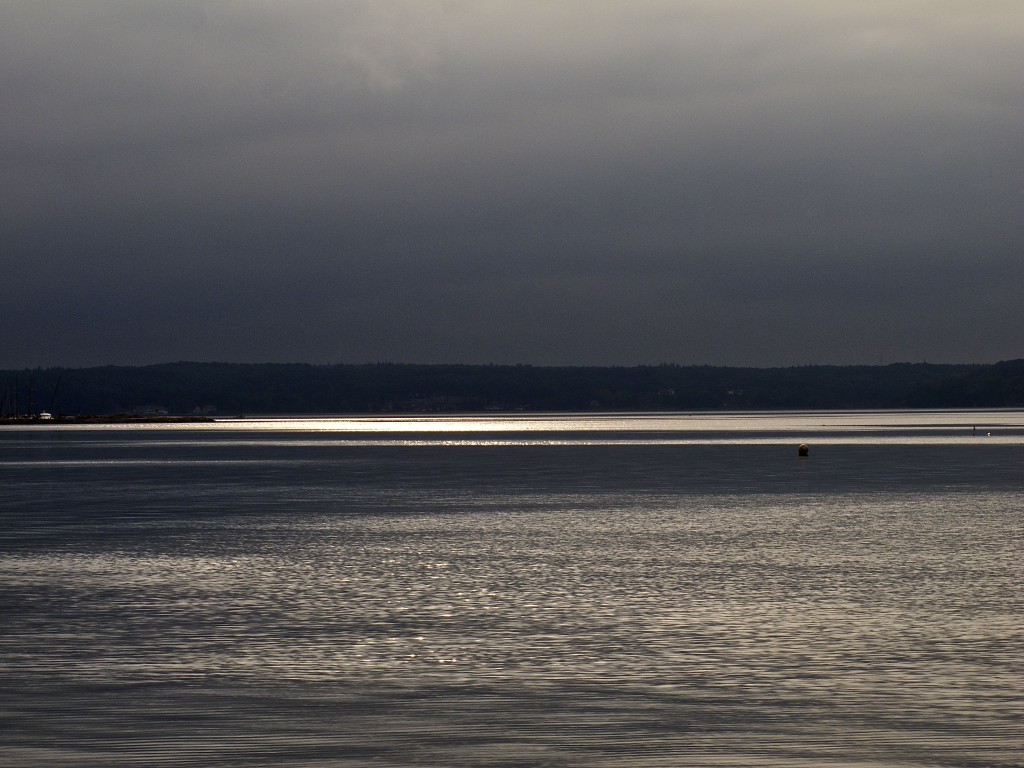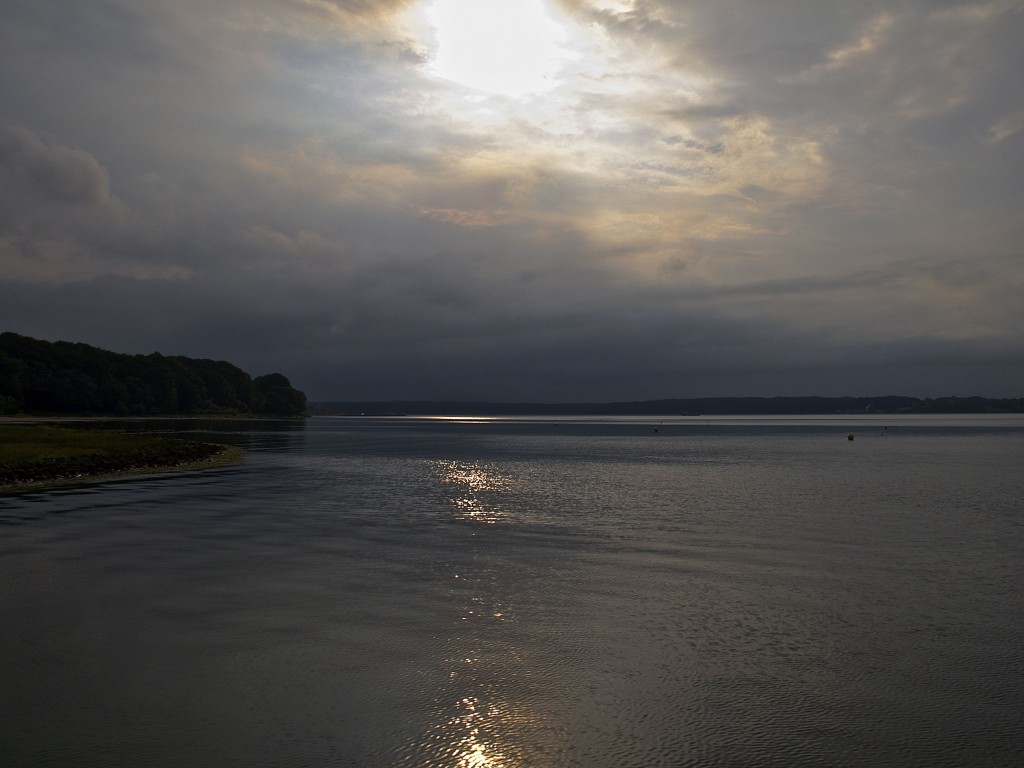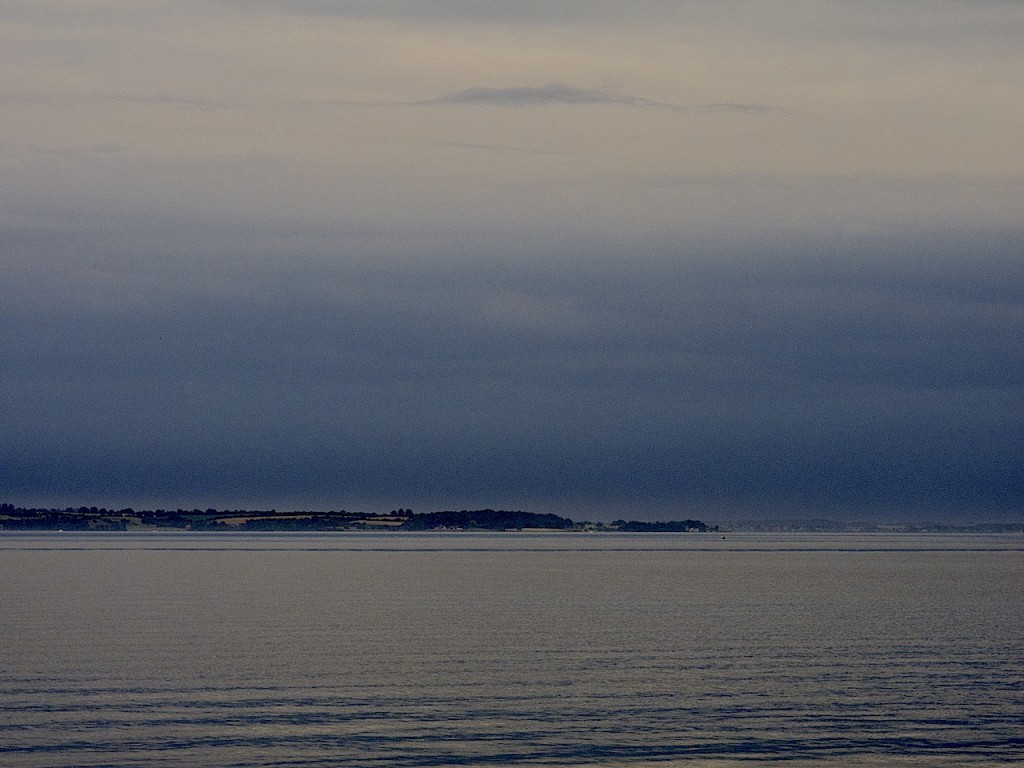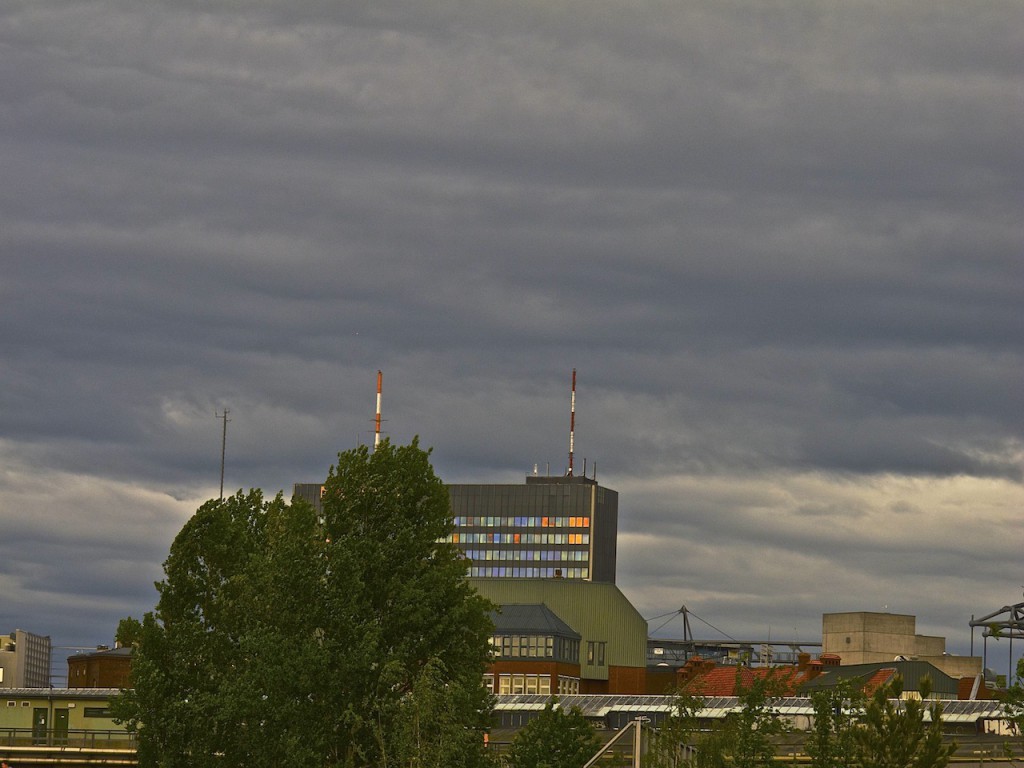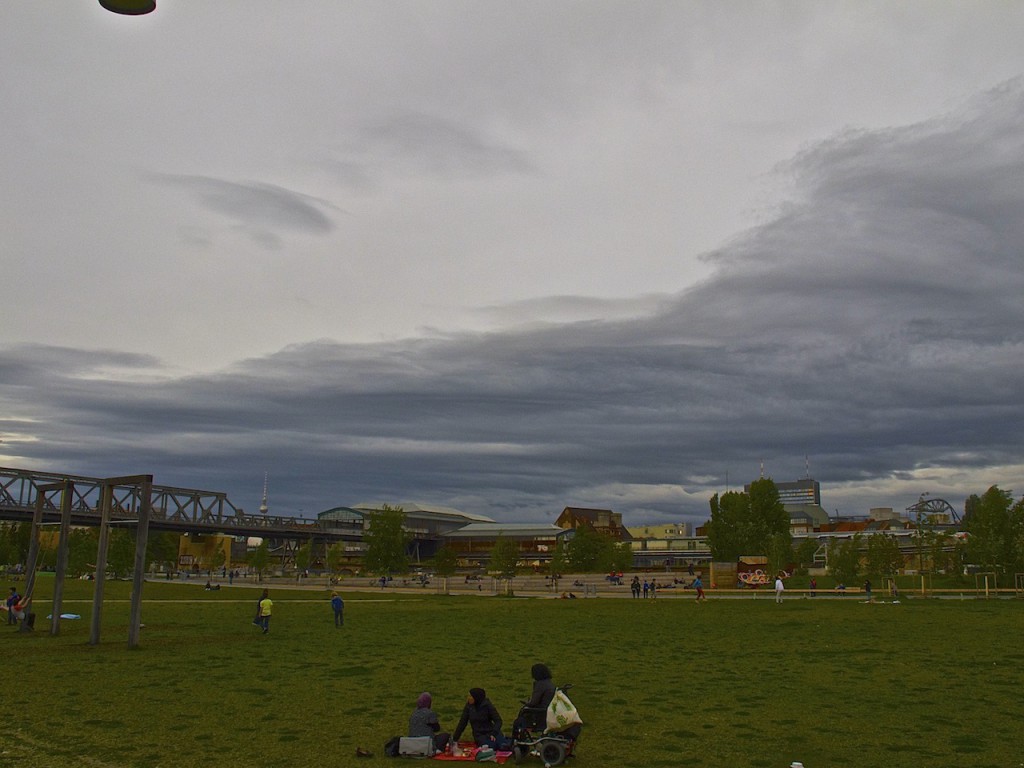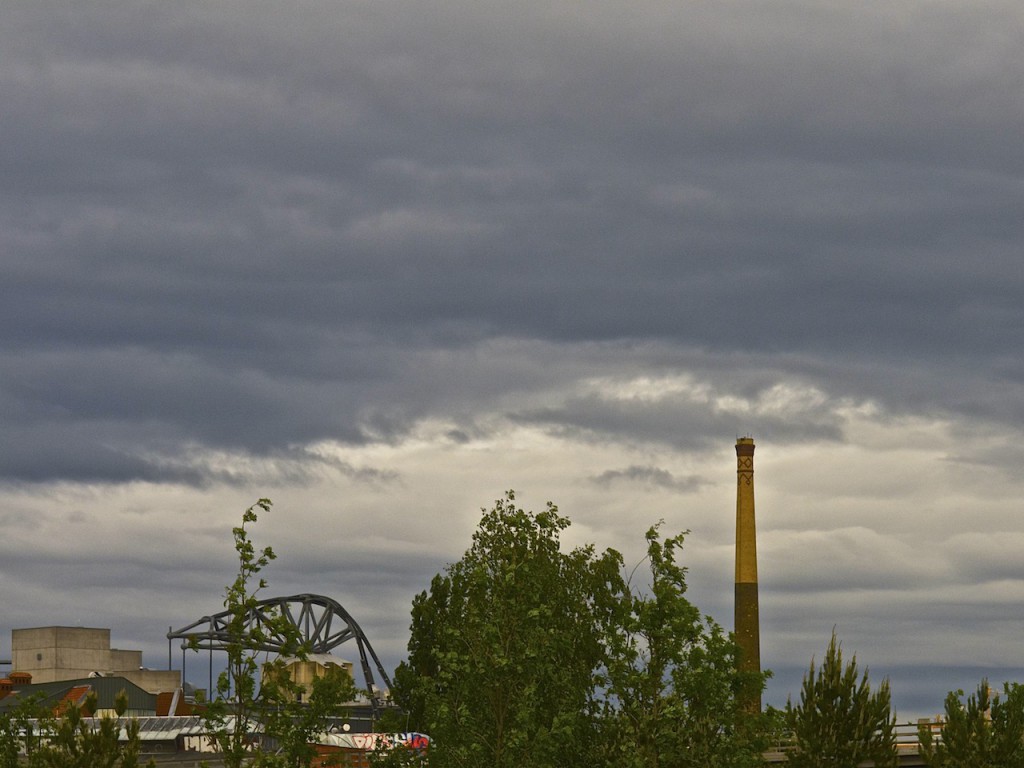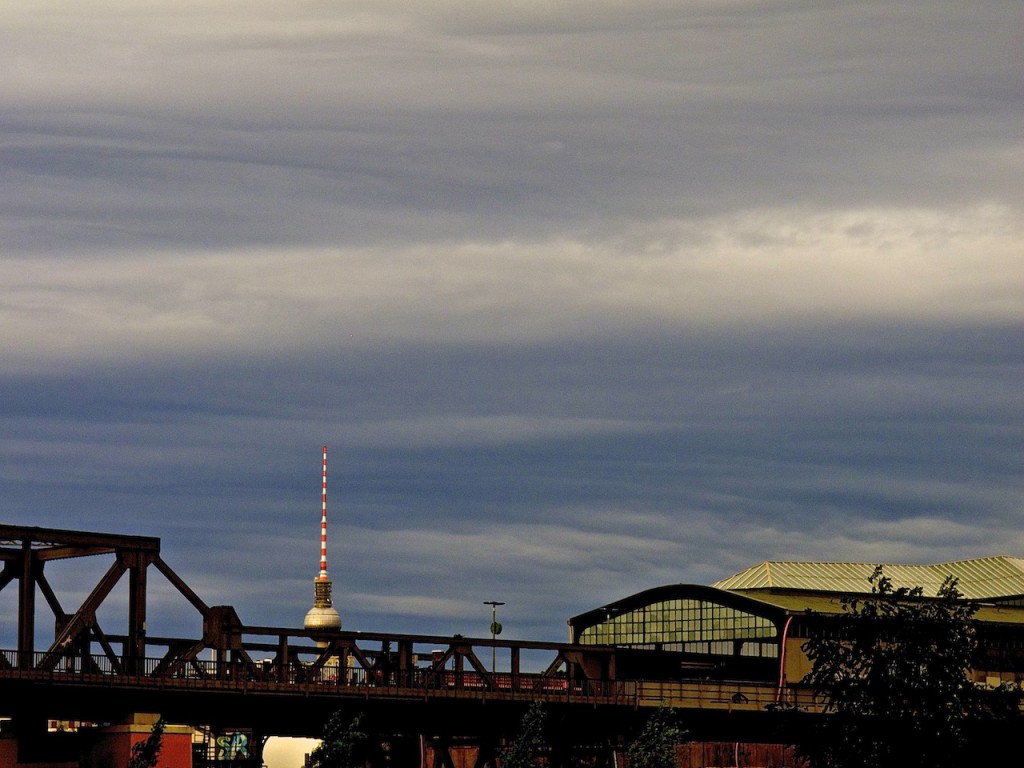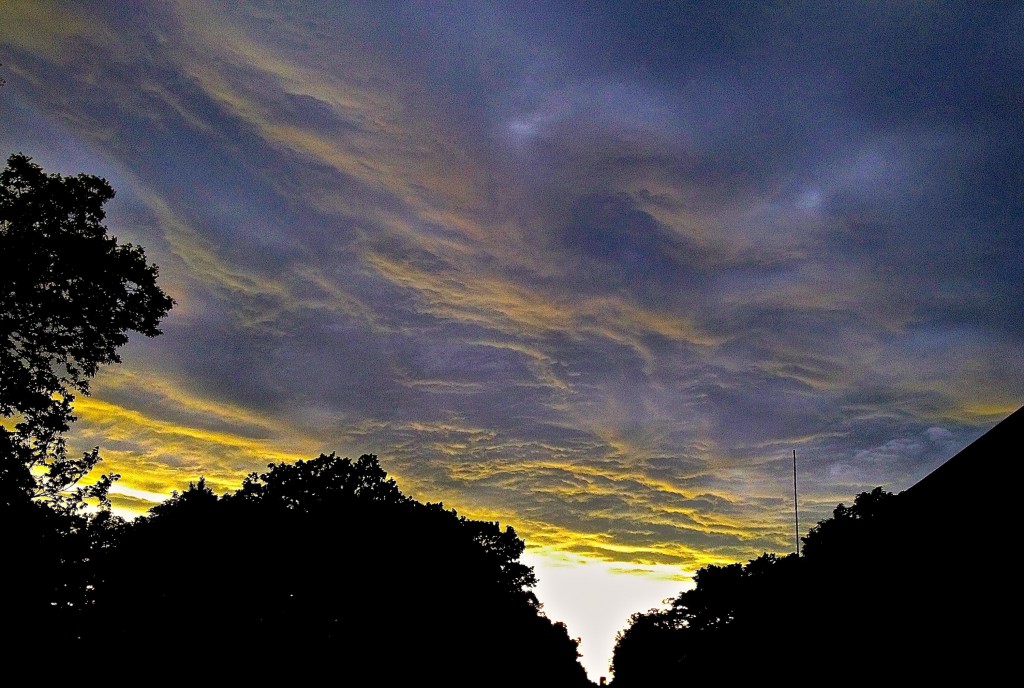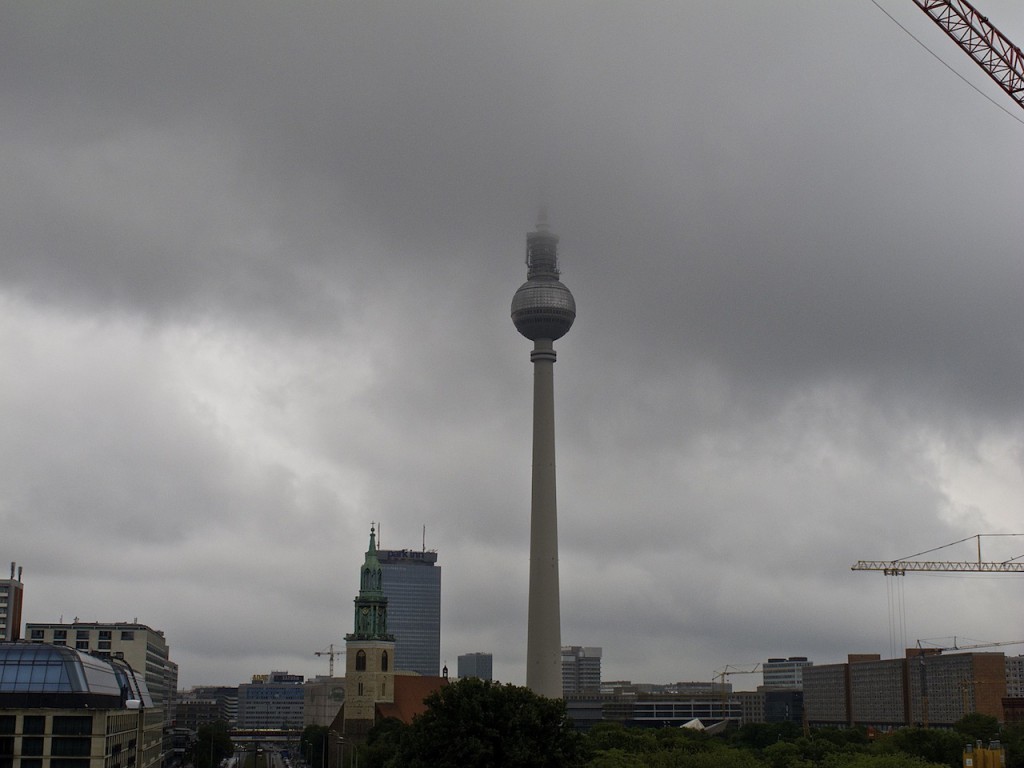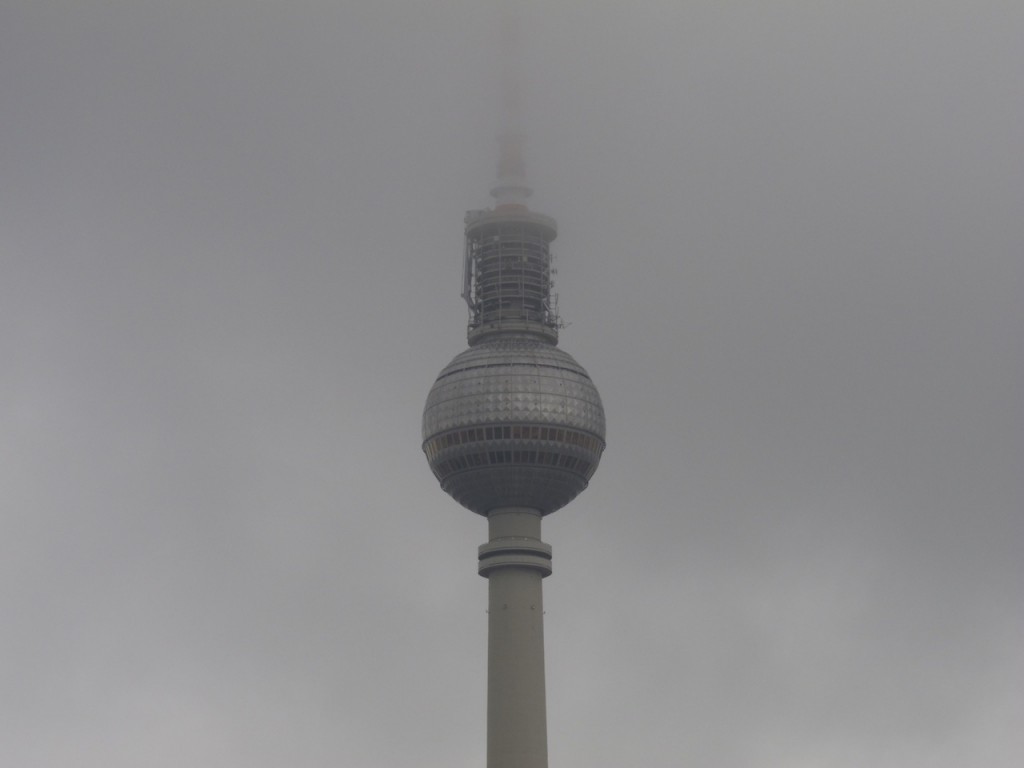“Tropical Berlin” – July 12, 2014
Showers and more showers. Thunderstorms in Germany nearly everywhere. It has been a strange week and a weather situation which must weather forecasters drive cracy – Saturday was supposed to become dry in the North-East but already in the morning again big white clouds could be seen in the sky. Weather seems to be unpredictable these days. And they can’t tell where exactly severe weather must be expected.
Saturday brought again an interesting weather situation in Berlin. It’s really a tropical feeling now with a constant change between sun and rain and the wet air let you think you are really close to the rain forest. In the early afternoon there was a remarkable development: instead of many smaller shower clouds the Northern horizon became really dark and an impressing ice-umbrella of a thunderstorm cloud could be seen. I expected another big thunderstorm coming in but interestingly the cloud didn’t come closer. Instead sun was shining in the city for most of the time since the sky in the west was clear. What happened can be seen in the time-lapse video below: the clouds close to the ground are moving in the opposite direction as the higher clouds. As the radar later showed heavy rain fell later north-east of Berlin. Obviously there was some wind-shear in the air – I am not an expert and can’t tell what exactly was going on the higher layers of the atmosphere but something must have happened and created these impressive scenes.
So far the “tropical air” is supposed to last even longer. The day before hiker’s found a snapping turtle in the river Spree. Seems like we’re getting closer to the equator.
http://youtu.be/RS1ZlaLR2ZQ
